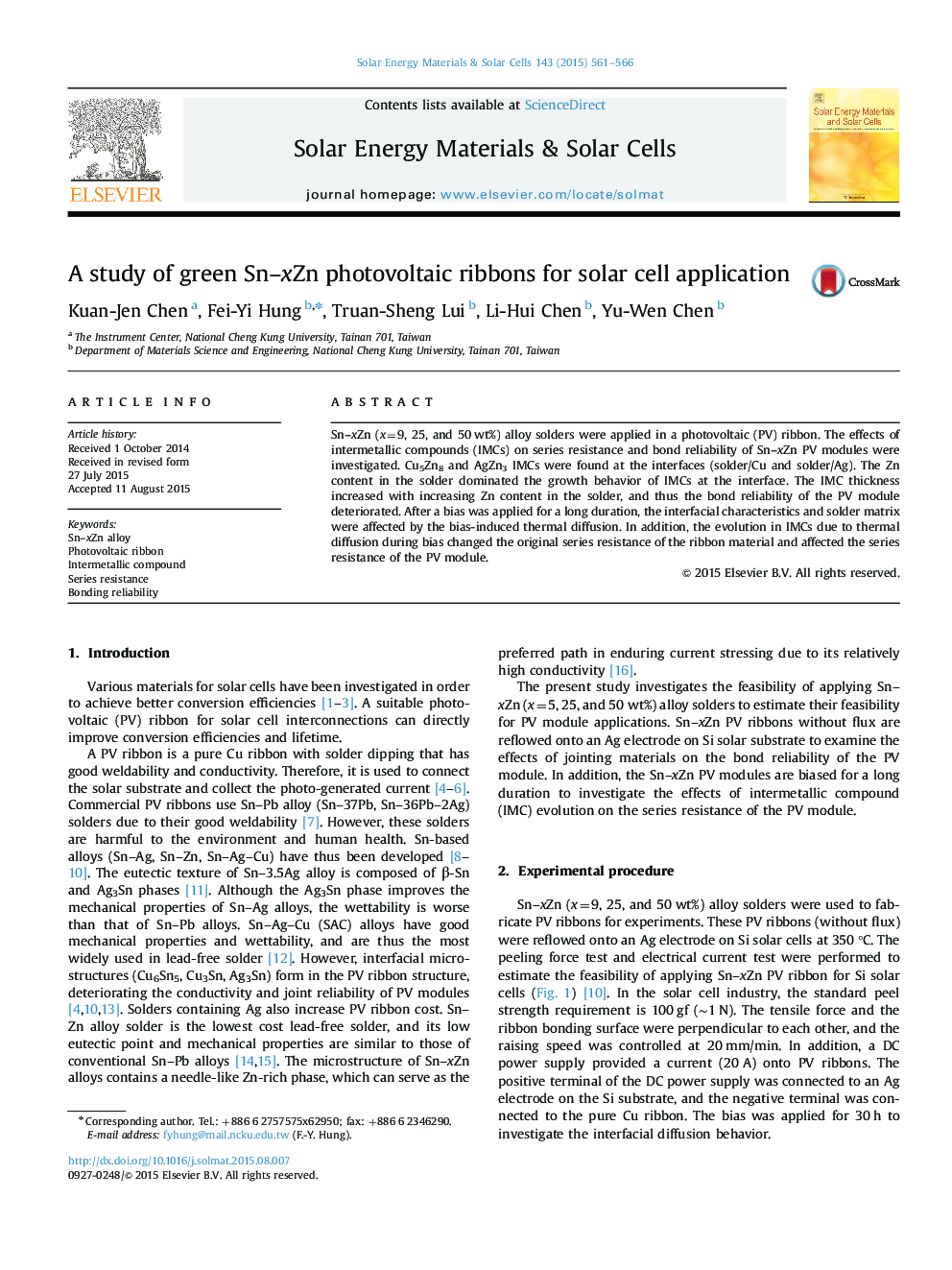| Article ID | Journal | Published Year | Pages | File Type |
|---|---|---|---|---|
| 6535123 | Solar Energy Materials and Solar Cells | 2015 | 6 Pages |
Abstract
Sn-xZn (x=9, 25, and 50Â wt%) alloy solders were applied in a photovoltaic (PV) ribbon. The effects of intermetallic compounds (IMCs) on series resistance and bond reliability of Sn-xZn PV modules were investigated. Cu5Zn8 and AgZn3 IMCs were found at the interfaces (solder/Cu and solder/Ag). The Zn content in the solder dominated the growth behavior of IMCs at the interface. The IMC thickness increased with increasing Zn content in the solder, and thus the bond reliability of the PV module deteriorated. After a bias was applied for a long duration, the interfacial characteristics and solder matrix were affected by the bias-induced thermal diffusion. In addition, the evolution in IMCs due to thermal diffusion during bias changed the original series resistance of the ribbon material and affected the series resistance of the PV module.
Related Topics
Physical Sciences and Engineering
Chemical Engineering
Catalysis
Authors
Kuan-Jen Chen, Fei-Yi Hung, Truan-Sheng Lui, Li-Hui Chen, Yu-Wen Chen,
